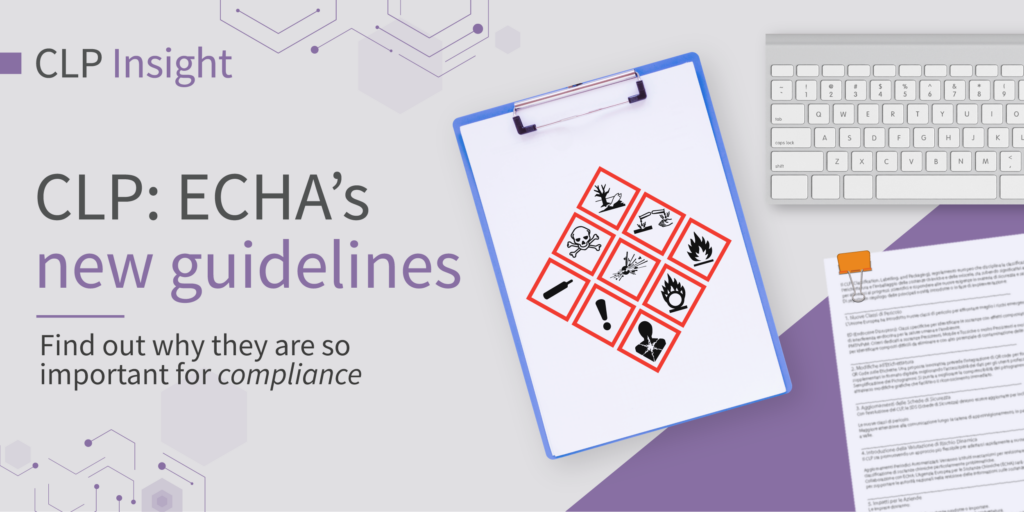2024 brought major changes for regulatory professionals.
The CLP Regulation was updated with Regulation (EU) 2024/2865, following the previous 2023/707. At the same time, ECHA released updated guidelines to help companies apply the latest classification criteria. It’s a true regulatory shift – and it directly affects how businesses operate.
What’s new in the guidelines?
The revised ECHA guidance is organized into clear sections:
- General overview
- Part 1 – General principles of classification & labelling
- Part 2 – Physical hazards
- Part 3 – Health hazards
- Part 4-5 – Environmental hazards and additional hazards
Key updates include a new section (2.17) on desensitized explosives and the addition of new hazard classes: endocrine disruptors (for both human health and the environment) (Part 3 and 4), PBT/vPvB, and PMT/vPvM (Part 4).
EFSA also supported the drafting of sections on endocrine disruptors. ECHA recommends starting with Part 1 to understand the foundations before diving into the specifics.
Why it matters
These guidelines are practical tools. They explain how to apply the rules in Annex I of the CLP to assess the nature and severity of various hazards and they’re especially useful for understanding and evaluating the new hazard classes. Whether you’re classifying chemicals or verifying supplier info, the guidance provides clarity and real-world examples.
Next steps for companies
The CLP Regulation requires manufacturers, importers, and downstream users to self-classify substances and mixtures. Need help? The updated guidance helps to do this confidently and correctly. It also supports recipients of safety information in actively reviewing what they receive.
Click here to download the new ECHA guidelines 👉 https://echa.europa.eu/guidance-documents/guidance-on-clp



